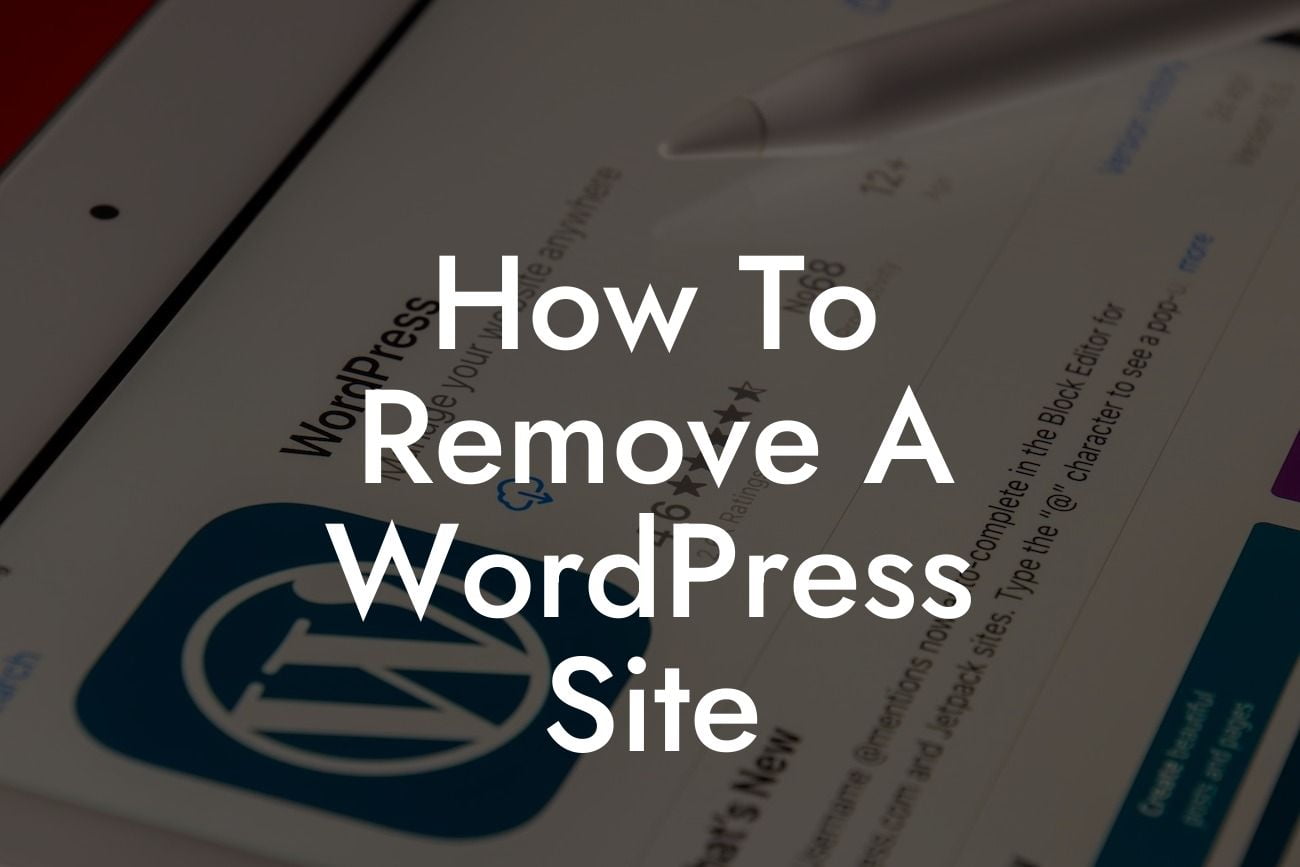WordPress has empowered countless small businesses and entrepreneurs to establish their online presence with ease. However, there may come a time when you need to remove a WordPress site for various reasons. Whether you're rebranding, starting fresh, or simply eliminating outdated content, this comprehensive guide by DamnWoo will walk you through the process of safely and effectively removing a WordPress site. Say goodbye to redundant websites and prepare to take your online success to new heights.
Removing a WordPress site may seem like a daunting task, but with careful planning and execution, you can effortlessly bid adieu to unnecessary webpages. Let's dive into the step-by-step process:
1. Backup your site: Before proceeding with any site removal, it's vital to create a backup. This ensures that all your valuable content and data remain intact for future reference or potential restorations.
2. Inform your team and visitors: If your WordPress site was actively producing content or serving a specific purpose, it's crucial to inform your team and regular visitors about the impending removal. Provide them with alternative ways to access your products, services, or content.
3. Disable plugins and widgets: Disable any active plugins and widgets on your site to prevent conflicts or errors during the removal process. This can be done through your WordPress dashboard or by manually deactivating them in the plugin settings.
Looking For a Custom QuickBook Integration?
4. Delete unnecessary files: Sort through your WordPress files and remove any unnecessary media files, themes, or plugins that are no longer needed. This declutters your site before initiating the removal process.
5. Remove website content: Whether you want to delete your entire website or specific pages, head to the WordPress "Dashboard" and navigate to "Pages" or "Posts". Select the pages or posts you want to remove and move them to the trash folder. Ensure you review and double-check the content before permanently deleting it.
How To Remove A Wordpress Site Example:
Let's assume you own a small business that sells artisan candles. Due to a shift in your business focus, you decide to remove the section dedicated to scented candles. By following the steps mentioned above, you can safely remove the pages related to scented candles, while preserving other relevant content.
Congratulations on successfully removing your WordPress site! By embracing the extraordinary and taking control of your digital presence, DamnWoo empowers you to supercharge your success. Share this article with other entrepreneurs or small business owners facing a similar challenge and explore our wide range of guides on DamnWoo to further enhance your online journey. Don't forget to check out our awesome WordPress plugins that can elevate your website and help you reach new heights.













